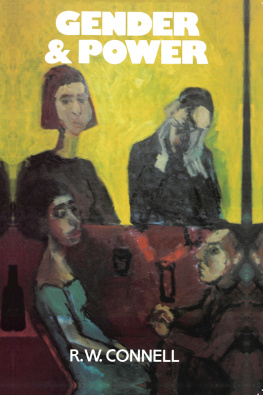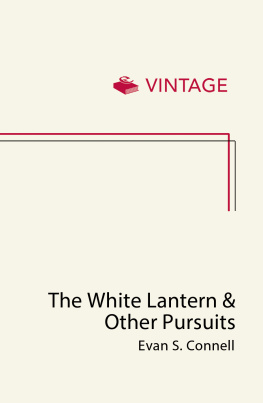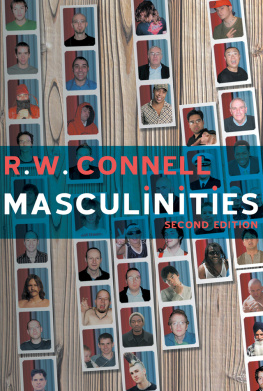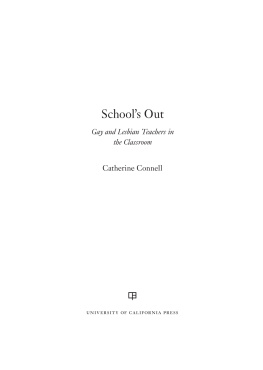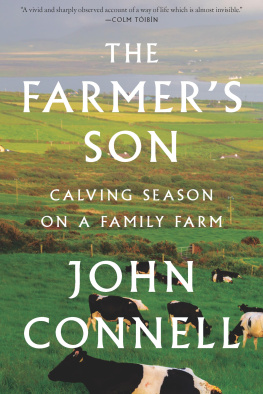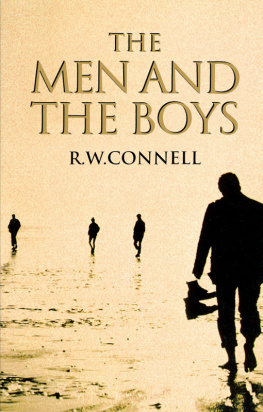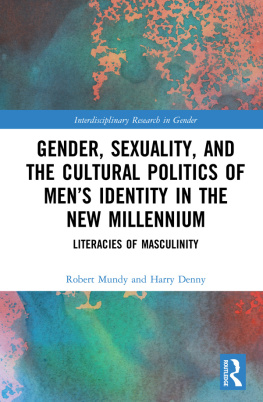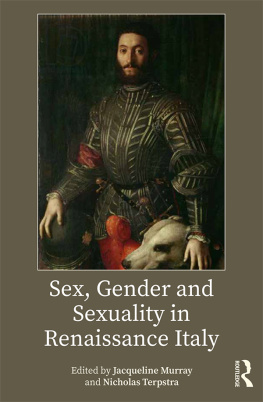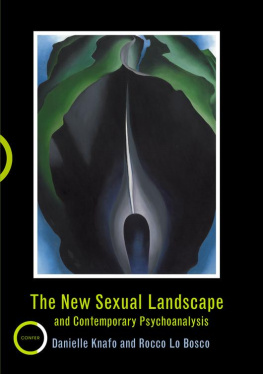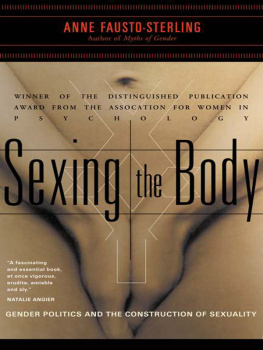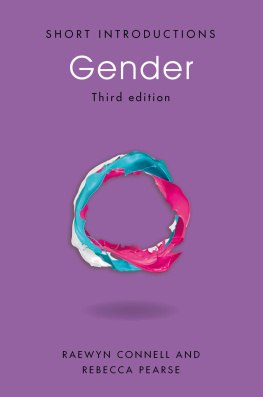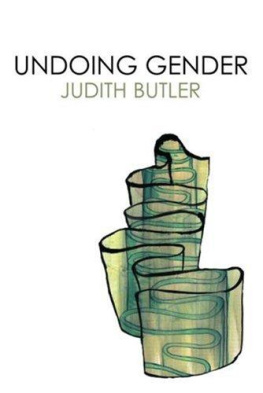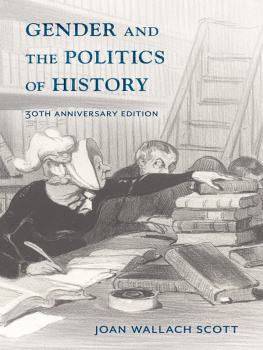GENDER AND POWER
Society, the Person and
Sexual Politics
R. W. Connell
Polity Press
Copyright R. W. Connell 1987
The right of R. W. Connell to be identified as author of this work has been asserted in accordance with the Copyright, Designs and Patents Act 1988.
First published in 1987 by Polity Press in association with Blackwell
Publishers Ltd.
Reprinted in 1991, 1993, 1995, 1996, 1998
Transferred to Digital print 2003
Editorial office:
Polity Press
65 Bridge Street
Cambridge CB2 1UR, UK
Marketing and production:
Blackwell Publishers Ltd
108 Cowley Road
Oxford OX4 1JF, UK
All rights reserved. Except for the quotation of short passages for the purposes of criticism and review, no part of this publication may be reproduced, stored in a retrieval system, or transmitted, in any form or by any means, electronic, mechanical, photocopying, recording or otherwise, without the prior permission of the publisher.
Except in the United States of America, this book is sold subject to the condition that it shall not, by way of trade or otherwise, be lent, re-sold, hired out, or otherwise circulated without the publishers prior consent in any form of binding or cover other than that in which it is published and without a similar condition including this condition being imposed on the subsequent purchaser.
ISBN: 978-0-7456-6527-6 (Multi-user ebook)
A CIP catalogue record for this book is available from the British Library.
Typeset in 11 on 12 pt Baskerville by Photo-graphics, Honiton, Devon
Printed and bound in Great Britain by
Marston Lindsay Ross International Ltd,
Oxfordshire
By the same author
Staking a Claim: Feminism, bureaucracy and the state (1989), with S. Franzway and D. Court
Teachers Work (1985)
Which Way Is Up? Essays on sex, class and culture (1983)
Making the Difference: Schools, families and social division (1982), with D. J. Ashenden, S. Kessler and G. W. Dowsett
Ockers and Disco-Maniacs: Sex, gender and secondary schooling (1982), with S. Kessler, D. J. Ashenden and G. W. Dowsett
Class Structure in Australian History (1980), with T. H. Irving
Socialism and Labor (1978)
Ruling Class, Ruling Culture: Studies of conflict, power and hegemony in Australian life (1977)
Twelve to Twenty: A study of teenagers in Sydney (1975), with W. F. Connell, R. E. Stroobant, K. E. Sinclair and K. W. Rogers
The Childs Construction of Politics (1971)
Politics of the Extreme Right: Warringah 1966 (1967), with F. Gould
Preface
The radical movements of the 1960s and 1970s opened debates about a range of practical issues to do with sex and gender, ranging from sexual expression to economic inequality, police violence against gays, and rape. Naming these issues, the new feminist and gay politics also posed theoretical questions and began to grow a theoretical language: sexual politics, oppression, patriarchy.
By the mid 1970s when these terms were common currency, it was clear to anyone willing to listen that womens liberation and gay liberation required a profound change in our ways of understanding society. Sexual politics brought to light patterns of power, interest and conflict which made little sense in terms of socialist class analysis, conventional economics, political science pluralism or sociological functionalism. A theoretical revolution in the social sciences was called for.
This has been slow in coming. It was not clear what kind of theory would be adequate to understand the world of sexual politics. Attempts were made to adapt existing ideas. A quiet academic backwater, sex role research, suddenly found itself enormously popular and influential. Biology was roped in to explain matters the biologists themselves hardly dreamed of. Rival schools of thought emerged within feminism, debating the universality of patriarchy, the usefulness of psychoanalysis, the impact of capitalism, the significance of mens sexual violence. Theorists of gay liberation searched for inspiration through psychoanalysis, Marxism, anticolonialism and the emerging theories of discourse. By the early 1980s one influential school of feminism was abandoning the basic theoretical assumption of ten years before, the fundamentally social character of gender.
This book is an attempt to resolve some of the difficulties raised by these controversies and to propose the outline of a systematic social theory of gender. That is a generous ambition and one persons work can only be a fragment of the enterprise. But given the state of the problem it seemed timely to try out a large synthesis, to suggest how the different issues about gender might fit together. The argument, accordingly, ranges over a very wide field and the research has led me into some unexpected corners from the archaeology of ancient south-west Asia (trying to get some grip on the evidence for feminist origins arguments) to the lesser-known followers of Freud. It is inevitable that some parts of the analysis are thin, and some are relatively abstract or speculative. When there was a choice I put more time into problems that seemed relatively neglected, such as the institutionalization of gender, than into issues now widely studied, such as sexual ideology.
The basis of the synthesis, the logical starting-point, is the nature of social reality itself. Arguments about gender are plagued by an assumption that what is biological or natural is somehow more real than what is social. For instance it was often suggested in the early 1970s that sex roles were artificial because they were socially created (by media, schools or whatever). There was a sense that if you poked a finger at them it would go right through. Since then a good many fingers have been poked and they did not go through. Sexist stereotypes are still with us, showing impressive toughness and resilience. Social process has its own power to constrain, its own resistance to dissolution. And yet it is entirely human. The oppression of women and gays is a matter of human agency, not of nature.
How to get a good understanding of these qualities has been a central issue in social theory over the last thirty years, and an uncommonly difficult one. The debates around structuralism in the 1970s got badly hung up on a contradiction between the impersonality and the humanness of social process. There is, however, an approach emerging in social theory that has a more convincing answer, though it is still not widely known outside a technical readership. One of its sources is the theory of practice derived by philosophical critiques of mainstream Marxism; another is the dualist or recursive models of the relation between structure and practice developed in theoretical sociology; and a third is the contextual analysis of the self, personal action and intersubjectivity developing in social psychology.
There is no commonly accepted term for this approach; I will call it the theory of practice for short. It seems to me consistent with the best current research on gender and sexual politics, and to offer resolutions of some of the dilemmas the theory of gender has run into. Accordingly the general approach of the book is to bring together the theory of practice with the problems of sexual politics. This is far from being a one-way trade, an application; it has involved reformulations of both. One of the unexpected outcomes was a demand for a practice-based approach to personality, which grew equally from a general principle of historicity, the findings of psychoanalysis and the experience of sexual liberation movements.
The reasons for undertaking the enterprise were partly that I wanted to understand the problems myself and partly that theory is important, at least in the long run, for practical politics. Bad theories will do harm. There are enough dilemmas and strategic conflicts in sexual politics to make a decent theory of gender a tangible asset for progressive politics of many kinds.

